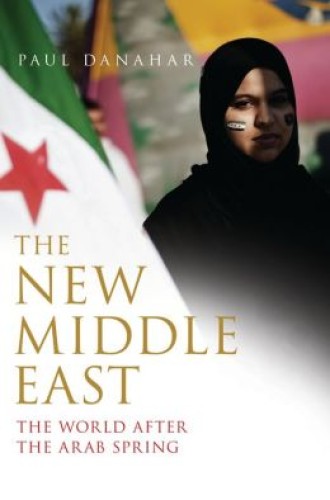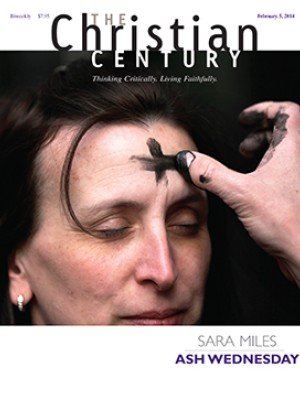The New Middle East, by Paul Danahar
As Egypt struggles toward stability and Syria descends further into a bloody nightmare, the Middle East’s ancient Christian communities have taken to observing sadly that the Arab Spring has turned into an Arab Winter. The devastation that the U.S. invasion of Iraq and its complex aftermath wrought on the Iraqi church is now being reprised in even grimmer fashion in Syria. Across the Middle East, emigration trends that already posed a threat to the future of Christianity in the region have intensified.
Christians in the United States who are committed to accompanying the churches of the Middle East as they find courageous ways to witness to the gospel amid violence, economic hardship and the threat of unrest are looking for help in understanding the shifting dynamics of the post–Arab Spring Middle East. Paul Danahar’s lengthy study The New Middle East: The World after the Arab Spring would seem to promise such help. The former senior Middle Eastern correspondent for the Guardian, Danahar reported from several Middle Eastern countries and has a generally firm grasp of key dynamics shaping the region.
Read our latest issue or browse back issues.
Although Danahar does not comprehensively discuss all the places where Arab Spring upheavals have challenged entrenched political regimes (his discussion of Tunisia is limited, and he barely mentions Bahrain and Yemen), he does cover a substantial amount of ground, with a chapter each on Egypt, Iraq, Libya, Syria and U.S. Middle Eastern policy, as well as two chapters on Palestine and Israel.
He is an astute analyst of the Palestinian-Israeli conflict, rightly observing that a major difficulty for the Palestinians is that their struggle is one “with which the Western world is now largely bored.” Danahar captures well how territorial fragmentation of the Occupied Territories by Israeli settlement construction and by walls, fences, roadblocks and checkpoints has contributed to the fragmentation of Palestinian politics, and how Israel’s separation barrier has placed Palestinians out of sight and out of mind. Accordingly, Danahar explains, the last Israeli election “was fought on issues about Israel’s relationship with itself, not with the Palestinians.”
Readers of The New Middle East will find much to appreciate. Danahar provides plenty of historical background to the recent events he discusses, for the most part his information and analysis are sound, and his style is not laden with jargon. Unfortunately, however, the book also contains some significant flaws.
Danahar has an unfortunate tendency to make grandiose, oracular pronouncements that initially sound profound but fall apart upon closer inspection. “God has returned to the Middle East,” he intones, claiming that religion has eclipsed nationalism in the region. This bald claim fails to account for the ways in which nationalism and religion continue to be intertwined.
Furthermore, Danahar’s desire to write a definitive study of the Middle East in the wake of the Arab Spring leads him to shoehorn in topics that can only dubiously be included under the rubric of the “new Middle East.” The chapters on Israel and the Occupied Territories particularly exemplify this tendency. The intensifying conflict between secular and ultra-Orthodox elements, for example, has marked Israeli Jewish society for decades, yet Danahar declares that “Israelis no longer all think the same, talk the same or worship the same,” as if there were some time in the recent past when they did. Similarly, Danahar opines that the Arab Spring has weakened the Palestine Liberation Organization and strengthened Hamas, but Hamas’s rise in comparison to the PLO was building throughout the first decade of this century, and if anything, Palestinians in Hamas-controlled Gaza have become increasingly disillusioned with Hamas since 2007, when it seized power from Fatah, the dominant PLO faction.
Though Danahar opens some the chapters with stories of particular communities and persons who are attempting to exert political power in the region, he too often moves the focus away from them and toward shifting U.S. involvement. This is not surprising; foreign correspondents typically spend much of their time covering diplomatic developments. That said, additional carefully analyzed stories of particular persons and communities would have produced a richer account.
Finally, Danahar portrays the Muslim Brotherhood’s victories in the post-Mubarak elections as a definitive moment from which there will be no turning back. “The long war between the Brotherhood and the army is over,” Danahar declares; the Egyptian military has “conceded defeat.” This argument has, of course, been overtaken by events, specifically July’s popular protest against the Muslim Brotherhood–led government and the army’s deposing of elected president Mohamed Morsi and subsequent outlawing of the Brotherhood. In Danahar’s defense, in making his assessment before these events unfolded, he relied on prominent scholars of Islamist movements such as Olivier Roy, who stated after the Brotherhood emerged victorious in elections that “I don’t see the army at all resenting the Brotherhood coming into power.”
Such are the dangers of prognostication. Like much of the Western media, Danahar failed to examine the managerial incompetence, the sectarian insularity, the autocratic tendencies and the human rights violations that marked the Brotherhood’s short rule, all of which fueled the broad discontent with the Brotherhood that culminated in the massive protests calling for the Morsi government to step down.
Taken together, these flaws in Danahar’s analysis deeply compromise what otherwise promised to be a solid study. Readers wanting a general overview of the Middle East in the wake of the Arab Spring could find several parts of Danahar’s study useful, but those wanting a deeper assessment that is less U.S.-centric or that looks closely at how Christians in the Middle East are being devastated by and are adapting to new political and military realities will need to look elsewhere.







